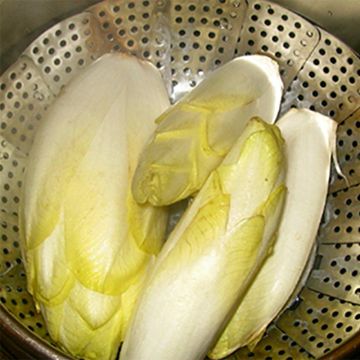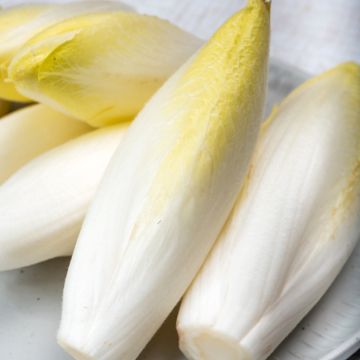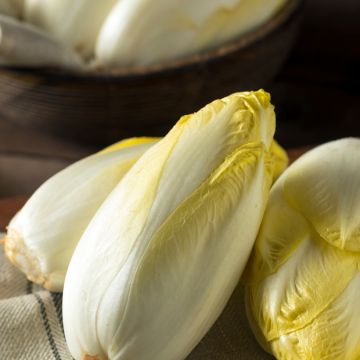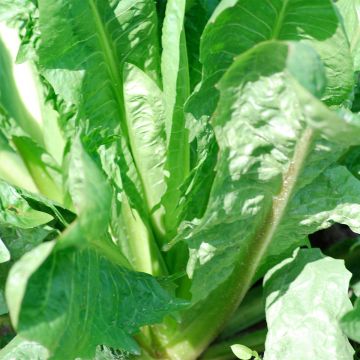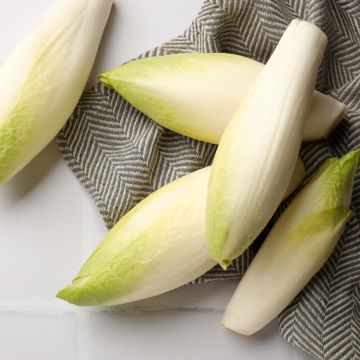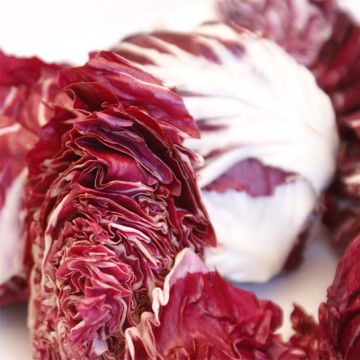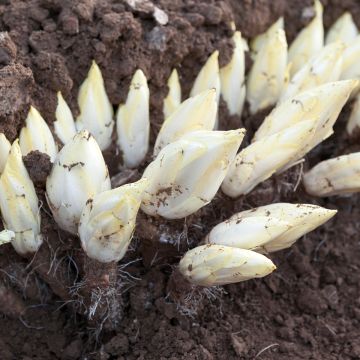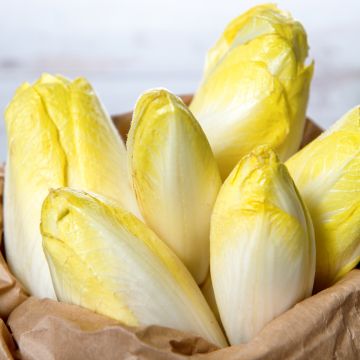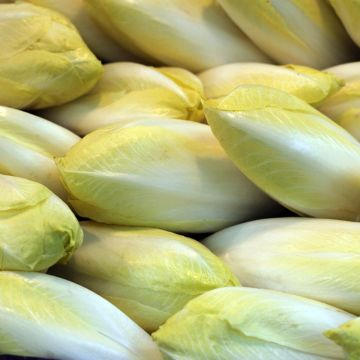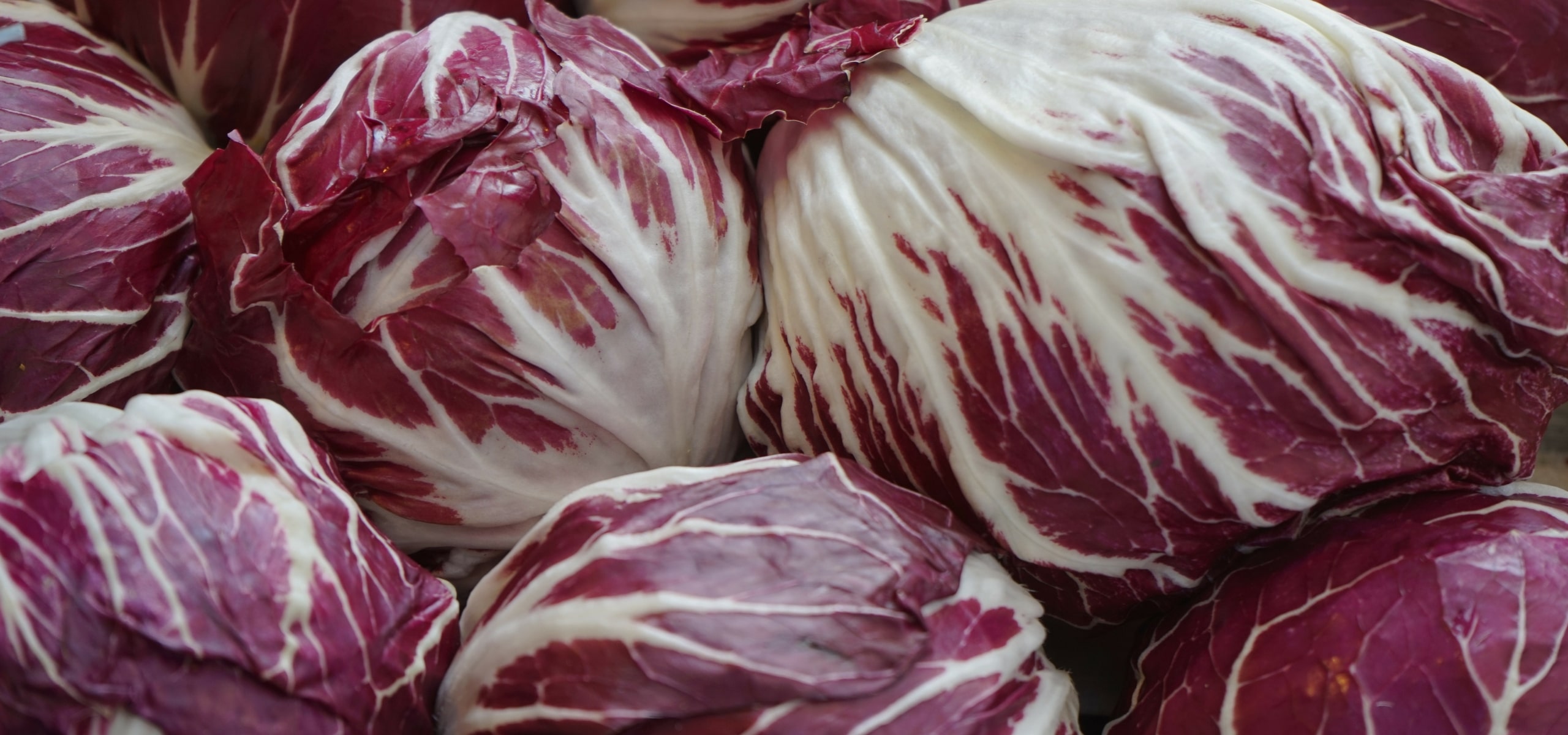
Succeed in growing chicory and blanching it
All our tips
Contents
The chicory is a leaf vegetable appreciated for its bitter flavour. It can be consumed in salads (chicory is often part of mesclun, mixtures of young plants from different varieties of salads), but also cooked, in gratins, with cream, braised… Discover all our tips for successfully growing chicory, from choosing the variety to harvesting, including sowing, planting, maintenance, and blanching, which helps to attenuate its bitterness.
Which variety to choose?
There are not just one but several types of chicory, among which we distinguish:
- Frisée chicory: Recognisable by its fine, highly dissected leaves, frisée chicory is often used in salads to add texture and crunch. Its leaves are more tender and less bitter than those of other types of chicory. Among the popular varieties, we find the ‘Wallonne’, the ‘Fine de Meaux’, and the ‘Frisée de Ruffec’.
- Escarole chicory: Escarole has broad, crunchy leaves that are slightly bitter. It is ideal for salads but also for cooked preparations. Among the popular varieties, we find the ‘Cornet d’Anjou’, the ‘Grosse bouclée’, or the ‘Géante maraîchère’, which are highly appreciated for their cold resistance.
- Wild chicory: This is the hardiest variety, which grows naturally in fields. It produces elongated, dentate leaves, often used in salads. Some varieties, such as coffee chicory, are cultivated for their roots which, once roasted, can serve as a coffee substitute.
- Witloof chicory: This chicory is grown to produce endives (or chicons). After an initial cultivation in open ground, the roots are harvested and then replanted out of the light to grow the endives, which are white, crunchy buds. Their cultivation is particular and is the subject of a dedicated guide.
Read also
How to blanch winter lettuces?Where to install chicories?
In the vegetable garden, chicories thrive in all rich, fresh, and light soils, neutral or slightly acidic. Heavy, clayey soil can be improved by adding compost or sand to facilitate drainage. They prefer a sunny location, although a little shade can be tolerated. The stronger the sun exposure, the more productive the chicories will be. They are less sensitive to high heat than lettuces.
Chicories are “good companions”; they pair well with many vegetable plants. Their proximity is particularly beneficial to rocket, lettuces, and beetroots.
Discover other Chicory
View all →Available in 2 sizes
Available in 1 sizes
Available in 1 sizes
Available in 1 sizes
Available in 1 sizes
Available in 1 sizes
Available in 1 sizes
Available in 1 sizes
Available in 1 sizes
When and how to sow chicories?
Sowing chicories takes place from mid-April to mid-August, but each variety has an ideal sowing period that should be respected. For this, refer to the instructions on the seed packet. Generally, the optimal germination temperature is around 20 °C.
Sowing is done directly in the ground, but you can also start from young plants that are then planted in the garden. When planting in the garden, be sure to respect the planting distances: chicories can be quite large and need space to develop.
- In the ground: Sow directly in ranks spaced 30 to 40 cm apart. Bury the seeds about 1 cm deep, then cover with fine soil.
- In a nursery: For the more cold-sensitive varieties, such as curly chicory, you can sow in a nursery and then transplant the young plants.
When the young plants have about 4 leaves, thin them out to leave one plant every 20 cm. This operation allows more space for the remaining plants to develop properly.
Read also
Chicory: cultivation, benefits and useWhen and how to plant chicories?
After sowing your chicories, you will eventually need to transplant the young plants to ensure their good growth. Transplanting takes place approximately 4 to 6 weeks after sowing, when the plants have 4 to 6 well-developed leaves. This is usually done in May or June for spring sowings.
Replant the young plants in open ground, spacing them 30 to 40 cm apart in all directions. Ensure that the collar of the plant (the base of the leaves) remains at soil level, as transplanting too deeply may lead to rot.
How to care for and whiten them?
The regular maintenance of chicories involves performing hoeing and cultivating regularly, as well as moderate but consistent watering. These tasks can be spaced out or significantly reduced if you mulch the soil with thin, successive layers of dried grass clippings mixed, if possible, with fallen leaves.
Chicories, particularly Wild Chicories, are known for their cold resistance. However, their hardiness has its limits: it is wise to protect them from harsh winter conditions with a frame, a Nantes tunnel, or more simply, with a forcing fleece or a thick mulch.
Blanching chicories involves depriving them of light to obtain tender and less bitter leaves. This operation is carried out about ten days before the harvest date, using various methods:
- covering the head with a clay pot or an opaque bell,
- tying the head with string so that the heart of the chicory is covered by the surrounding leaves,
- covering the chicories with an opaque plastic tunnel or, if you are growing your chicories under a frame, placing plastic, cardboard, or mats over it.
Note that blanching chicories is optional: this operation is not necessary for naturally sweet varieties or those that naturally blanch.
What are the pests and diseases of chicories?
Chicories are often preyed upon by slugs and snails. The most effective method of control is the use of Ferramol. This slug repellent is safe and suitable for organic farming. Anticipate by spreading the pellets two to three weeks before sowing or planting to get rid of them as early as possible.
Resilient, chicories can nevertheless be affected by rot. This phenomenon is favoured by a humid climate, as well as by confined environments. To avoid it, do not water by spraying the chicory, ensure proper planting distances, and do not blanch them when frost is forecast.
When and how to harvest chicories?
It is simply done with a knife when the heart is nice and white or when the apple is hard and dense. Act before any severe frost, but keep in mind that a light frost (or “white frost”) softens the taste of chicories.
- Subscribe!
- Contents































